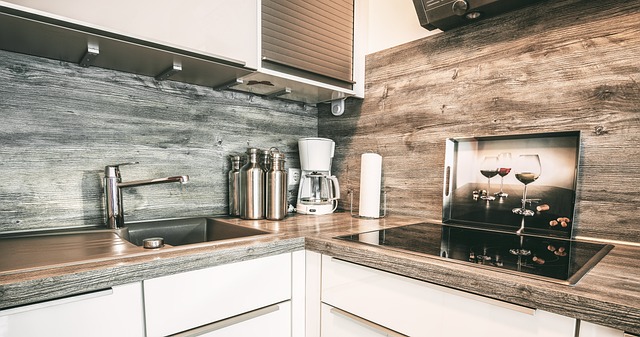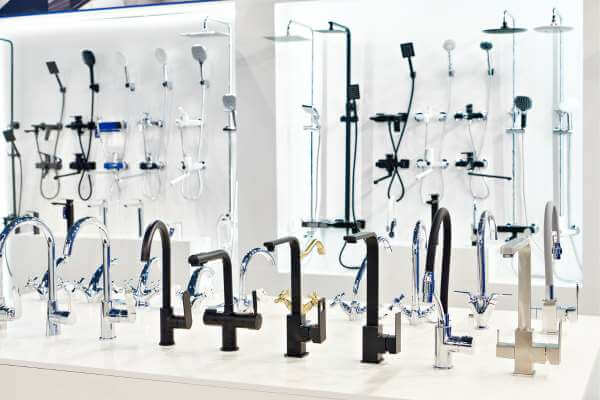The lifespan of a kitchen faucet largely depends on the quality of the product, the frequency of use, and the level of maintenance it receives. On average, a well-maintained kitchen faucet can last between 15-20 years. However, it’s not uncommon for a faucet to start showing signs of wear and tear after 10 years of use.
Common issues of kitchen faucets
One of the most common issues that homeowners face with kitchen faucets is a leak. A leaky faucet can cause water damage to the sink and countertops. Also increase water bills, and even lead to mold growth. If you notice a leak in your kitchen faucet, it’s essential to address the issue promptly. A minor leak can usually be fixed with a simple repair. If the faucet old and has many problems, it might be time for a replacement.
Aside from leaks, other signs that it’s time to replace a kitchen faucet include rust or corrosion, water discoloration, difficulty in turning the handle, and low water pressure. If you notice any of these signs, it’s time to replace your kitchen faucet before it causes more significant problems.
To ensure that your kitchen faucet lasts as long as possible, it’s essential to take good care of it. This includes regular cleaning and maintenance. Maintenance include removing mineral deposits and debris, lubricating the faucet handle, and tightening any loose screws. It’s also important to avoid using harsh chemicals when cleaning the faucet, as this can damage the finish.
Is it better to repair or replace kitchen faucet?
Deciding whether to repair or replace a kitchen faucet depends on the extent of the damage and the age of the faucet. In some cases, a simple repair may be all that’s needed to fix a minor issue. However, in other cases, a replacement may be necessary to prevent further damage or improve the faucet’s overall performance.
If the issue is minor, such as a loose screw or a worn-out O-ring, a repair be the best option. A skilled plumber or handyman can quickly diagnose and fix the problem, saving you money in the long run. However, if the faucet is old and has multiple issues, such as rust or corrosion, leaks, or a broken handle, it may be time to replace the fixture entirely.
Replacing a kitchen faucet may cost more upfront, but it can provide many benefits. For one, a new faucet can improve the overall appearance of your kitchen and increase your home’s value. Additionally, a new faucet may come with modern features, such as touchless activation or a built-in water filtration system. It can enhance your kitchen experience and make your daily routine more convenient.
When deciding whether to repair or replace a kitchen faucet, it’s important to consider the overall condition of the fixture and weigh the costs and benefits of each option. A professional plumber can help you make an informed decision based on the specific needs and budget of your household. Ultimately, choosing the best option will depend on your individual situation and priorities.
How much should I pay for a good kitchen faucet?
A quality kitchen faucet can generally be found for around $100. While it’s possible to find high-quality faucets at a lower price point, spending a little more on a faucet with enhanced functionality or aesthetic appeal may be worthwhile depending on your specific needs and preferences. Ultimately, the cost of a good kitchen faucet will depend on a variety of factors. The factors include the materials used, the brand, and the overall design of the fixture. It’s important to consider all of these factors when shopping for a kitchen faucet and choose a model that meets your needs while fitting within your budget.
What is the difference between a cheap and expensive faucet?
Cheap faucets
Cheap faucets are typically made from low-quality materials, such as plastic or thin metal, that are prone to rusting, corroding, or leaking over time. These fixtures may also have fewer features and limited adjustability, making them less convenient and practical to use. Additionally, cheap faucets may have a limited warranty, which can be an indicator of the manufacturer’s confidence in the product’s durability and performance.
Expensive faucets
Expensive faucets, on the other hand, are typically made from high-quality materials. High-quality materials such as solid brass or stainless steel, that are durable, resistant to corrosion, and built to last. Expensive faucets may also come with a longer warranty, which can provide peace of mind and protect your investment in the long run.
In addition to material quality and features, expensive faucets often have more sophisticated and appealing designs, with sleek lines and elegant finishes that can elevate the overall look and feel of your kitchen. These design elements can provide added value and aesthetic appeal, but they may not necessarily affect the faucet’s performance or functionality.
How do you know when you need a new kitchen faucet?
There are several indications that it may be time to replace your kitchen faucet, including:
- Mineral buildup: Over time, mineral deposits can accumulate inside the faucet, leading to decreased water flow and reduced performance.
- Age of the faucet: The lifespan of your faucet can vary depending on its quality. In general, older faucets may be more prone to leaks, rust, and other issues.
- Rust: Rust buildup on the faucet can cause leaks and other problems that can compromise its functionality.
- Leaks: A leaking faucet not only wastes water but can also indicate more significant underlying issues that may require replacement.
- Poor water pressure: Low water pressure can be caused by a range of factors, including clogged or worn-out faucets, making replacement a potential solution to restore water flow to optimal levels.
If you notice any of these signs, it may be time to consider replacing your kitchen faucet to ensure proper functionality, prevent water waste, and enhance the overall appearance of your kitchen.
What faucets last the longest?
Kitchen faucets are typically crafted from durable materials that resist corrosion, such as brass or stainless steel. These high-quality materials are known for their longevity and ability to withstand wear and tear over time. On the other hand, cheaper faucet models are often made from zinc alloys or plastic, which are less durable and can wear out more quickly. While these materials may be more affordable, they may not offer the durability as their brass or stainless steel counterparts. As a result, it’s important to carefully consider the materials used in a faucet when selecting a model. This can impact the overall quality and lifespan of the fixture.
Conclusion
In conclusion, a well-maintained kitchen faucet should last between 15-20 years, with some faucets lasting even longer. Regular maintenance and prompt repairs can help prolong the life of a kitchen faucet. It’s important to replace the fixture when it starts showing signs of significant wear and tear. By investing in a high-quality kitchen faucet and taking proper care of it, homeowners can enjoy years of reliable and efficient use from their kitchen fixture.


 Hi, my name is Debra Klein and I love modern kitchen designs! As a product reviewer, it’s my mission to help homeowners choose the right modern kitchen accessories for their homes. I want to give them the best solution possible so they can make the best decision for their needs. Thanks for reading!
Hi, my name is Debra Klein and I love modern kitchen designs! As a product reviewer, it’s my mission to help homeowners choose the right modern kitchen accessories for their homes. I want to give them the best solution possible so they can make the best decision for their needs. Thanks for reading!




